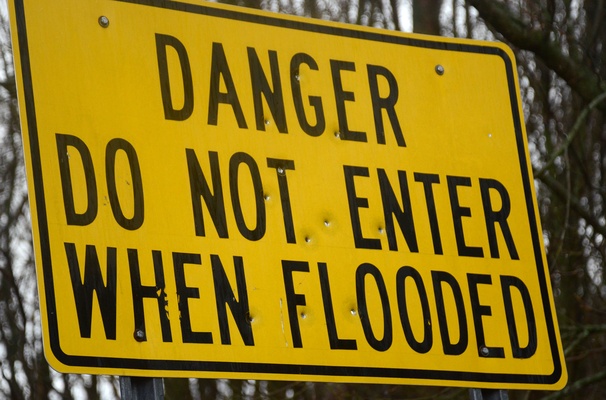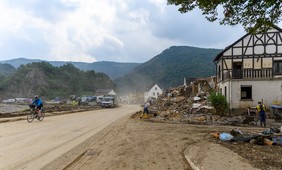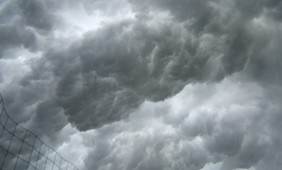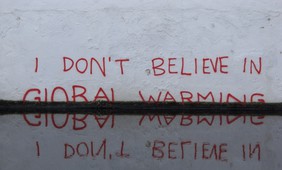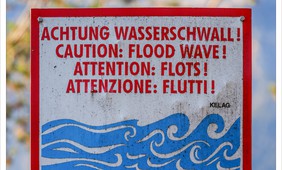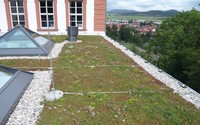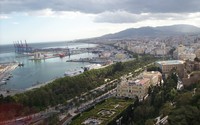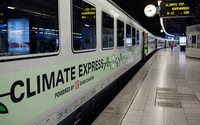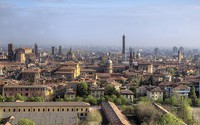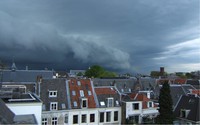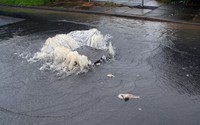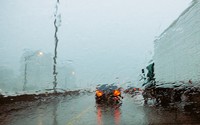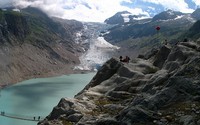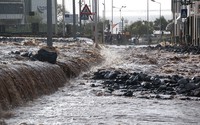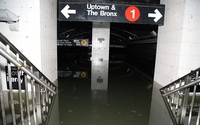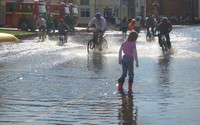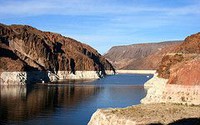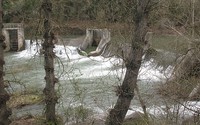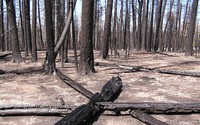Flash floods and urban flooding
Floods have become less deadly worldwide
Over the last five decades, floods have become less deadly. The global number of flood events has increased over time, but the average number of people killed and affected per event has decreased.
Half of the annual precipitation falls in fewer and fewer days
In many parts of Europe half of the annual precipitation falls in 22–34 days, and this number has reduced by at least two days in 40% of Europe’s land area since 1950, especially in the south.
Read more »A flaw in classic approach to flooding: the floods of 2021
The 2021 floods in Germany, Belgium and the Netherlands were more than just ‘heavy rain turning into fast-flowing water’, experts conclude. We must adapt a ‘landscape perspective’ to flooding.
Read more »Intense rainstorms are moving more slowly, causing more floods
Slowly moving rainstorms causing flash floods like those in Germany, Belgium and the Netherlands in the summer of 2021, may become up to 14 times more frequent in Europe by 2100.
Read more »Fingerprint of climate change in recent European floods
Scientists conclude that climate change has increased the likelihood and intensity of flash flooding in Western Europe and will continue to do so in a warming climate.
Read more »A European perspective on recent floods – Opinion
Catastrophic flood events may seem highly unlikely but are less unique when you look beyond national borders. In a European perspective, extreme flood events do happen every now and then.
Read more »The benefits and price tag of greening European cities
Greening 35% of European urban surfaces would cool these surfaces by between 2.5°C and 6°C, reduce urban runoff by about 17.5%, and save up to 55.8 Mtons carbon dioxide emissions per year.
Read more »Not climate change but population growth is increasing flood risk at Spanish Mediterranean coast
From north to south along the Spanish coastline, flood cases are more severe and damaging. The number of flood cases increases in the opposite direction. Halfway, near Málaga, flood risk is highest.
Read more »Do green roofs mitigate stormwater runoff in urban areas?
Green roofs can be a good option to reduce stormwater runoff to the urban drainage networks. They may not be that effective for long-lasting, extreme rainfall events, however.
Read more »Coming to Johannesburg: weather stations for climate (change) adaptation and awareness!
A large number of automatic weather stations of the Trans-African Hydro-Meteorological Observatory will be rolled out over Southern Africa. The first one was opened in Johannesburg on 14 July 2017.
Read more »Don’t pave your gardens. We need them to control urban flooding
Presented by UK urban flood risk specialists at the European Climate Change Adaptation Conference in Glasgow in June 2017.
Read more »Local adaptation to climate change varies across Europe, from north to south, and east to west
Presented by Francisca Aguiar of the University of Lisbon at the European Climate Change Adaptation Conference in Glasgow in June 2017.
Read more »Planning for climate change in Italian cities: barriers, opportunities and future perspectives
Presented by Filomena Pietrapertosa of the National Research Council of Italy at the European Climate Change Adaptation Conference in Glasgow in June 2017.
Read more »Stronger weather fronts over Europe induce more extreme weather
Extreme weather events are frequently associated with the passage of large-scale fronts. The number of extremely strong fronts is increasing, and so are precipitation extremes.
Read more »Green versus engineering: climate-proofing urban storm water networks calls for tailor-made solutions
More vegetation may be effective as an integral component of storm water adaptation measures to mitigate climate change-induced flooding. The extent varies from one urban area to another, however.
Read more »First climate models were right: heavy rainfall events are increasing
The first climate models were right. In 1989 a future increase in the frequency of heavy rainfall events was projected for the first time. Now, heavy rainfall events are increasing indeed.
Read more »Dangerous beauties. Risks and opportunities of new lakes formed by melting glaciers
Melt water of shrinking glaciers forms new lakes by filling up depressions in the landscape. New opportunities arise for hydropower, tourism, and freshwater supply. But new risks arise as well.
Read more »70% of Europe’s flood casualties are due to flash floods, and the number of flash floods increases
Trends of increasing numbers of flash floods in, for instance, Spain agree with the IPCC hypothesis about the increase in both torrential events and people’s vulnerability and exposure to floods.
Read more »The green revolution in urban drainage
Experiences in Copenhagen, New York, London, Rotterdam and Amsterdam shared at the Adaptation Futures Conference in Rotterdam, The Netherlands, May 2016
Read more »It seems to rain harder in the Czech Republic, but is it due to climate change?
In recent decades, both several large-scale flood and severe flash floods resulting from extreme short-term (sub-daily) precipitation have affected Central Europe.
Read more »How to turn flash floods into a resource
At many places climate change both increases droughts and heavy rainfall. Too little and too much water are part of the same problem. They may be part of the same solution too
Read more »Flash flood in Russian town Krymsk in 2012 most likely caused by climate change
In July 2012 extreme rainfall caused a flash flood near the Black Sea town of Krymsk that killed over 170 people. The daily precipitation total exceeded all previous
Read more »Copenhagen pluvial and coastal flood risk now and in the future
In Denmark, the need for rapid reaction has been exacerbated by a large increase in the number of extreme precipitation events. These events have resulted in pluvial flooding
Read more »Changing global patterns of urban exposure to flood and drought hazards
With respect to high-frequency flood zones, including exposure to both coastal and river floods, in 2000 about 30% of the global urban land was located in these zones; by 2030, this will reach 40%.
Read more »Future flash floods in the Llobregat River basin, Spain
The Llobregat River basin in the eastern part of Catalonia (northeast of Spain) has all the specific characteristics to develop severe flash floods
Read more »Forest fires and their impact on flash floods
Mediterranean regions are subject to violent flash floods that could be intensified in the future due to forest fire and/or climate change ...
Read more »Adaptation to climate change impacts on urban storm water
Problems with efficient dewatering following heavy rainfall events are not uncommon already today, e.g. because of urbanization beyond the system capacity ...
Read more »
